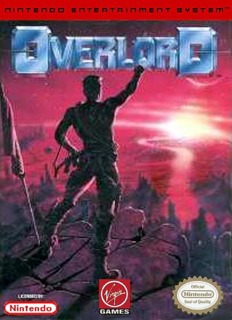A genuinely fun game, although not perfect.
Corruption is a score that is an aggregate of points awarded to you for dastardly deeds and penalized by kind deeds. Kindness is like returning food stolen from a village, cruelty is like letting the elven race go extinct (amazingly satisfying). The more evil you play, the more sinister both the Overlord and his Dark Tower appear. Your score also determines the ending you get, and reaching 100% or maintaining 0% is not easy. On the first play-through, most players will find themselves in between. I plan to play again and go for 100% evil.
By far the most memorable part of Overlord is the minion horde. These little devils look like Gremlins, and have similarly funny-evil personalities. They are eternally loyal, even after being kicked around by the Overlord or incinerated for forging (more on that below). The size of the horde increases as you play, usually by finding Objects or by upgrading your helmet. The horde can be upgraded by looting barrels and chests for weapons and armor, as well as taking from the corpses of slain enemies. This increases their horde power, and a horde with 300% and over attack power is formidable. The minions come in four flavors: 1) Browns, which are the soldiers 2) Reds, who are immune to fire and like to hurl it at enemies 3) Greens, who are immune to poison, able to camouflage, and are accomplished backstabbers and 4) Blues, who can move through water, resurrect dead minions, and harm magic entities.
Understanding how and when to use all four of these minion types is critical to completing the game. Their use is relatively straightforward; you target an object or enemy, and unleash chaos. Multiple targets can be selected at once, even dividing up the horde by color. The targeting can get hairy when many enemies are on the screen, especially when some are more critical than others. However, practice makes perfect. Sadly, your little beasties can be slain in battle or by inadvertantly sending them into an environment that is lethal (fire for non-reds, water for non-blues, etc). It is easy enough to find the right life force to restore the horde; water, fire, and poison beetles contain the life force required for the Blues, Reds, and Greens, respectively. You can always go sheep slaughtering to restore the Browns, but any treasures that were acquired by that particle dead minion is forfeit, thereby lowering your horde attack power.
Forging is one of the few customization options for the Overlord himself. Different armor and weapons can be made here, depending on which forges you've found. Within these types, you can further imbue the items with minions essences through gleeful sacrifice. For example, to charge your mace with fire damage, you sacrifice a few dozen red minions into the forge. Or, to add regeneration to the armor, you can load it up with greens. They seem to love it.
The Overlord himself is an engine of destruction. His attack power is high, he casts spells, and can take a relatively large amount of damage. He learns new spells from Objects found in the field. At the high (3rd) level, the type of spell you learn depends on the Corruption level at the time. The spells are divided into 4 basic groups: 1)fire attack 2)shield 3)horde enhancement 4)enemy debilitation. Just like the minion types, the when and how to use spells is critical. For example, rather than charging into a field to kill halflings, you can just set the whole thing ablaze and watch them broil. Rather than directly attacking a heavily armed and drunk dwarf (read: DANGEROUS), you can subjugate him to the point where he's docile as a puppy and just as vulnerable. Good stuff.
One last thing that I loved about Overlord is the rich level design. Mellow Hills comes off as and even feels tranquil and idyllic, Evernight mystical and sad, and Heaven's Peak diseased and profligate. In fact, if one thing comes to my mind about Overlord, it isn't a minion running around with an axe and a bra or pumpkin on his head. Rather, it is the gorgeous levels. They are big, full of content, and very much eye candy.
Just like any game, there are faults. My dislikes:
1. The controls for the Overlord. I realize he's a mountain of metal, so being nimble is not in the cards. However, he moves like an old tank in that there seems to be just the slightest lag in his movements.
2. Camera issues. I constantly have to realign the camera to see what's going on. An auto-center option should be available. This is especially true in claustrophobic areas like the Abyss levels.
3. No area maps. Though I like the fact that the levels are large and complex, it is easy to get lost.
4. Objective confusion. Many quests pile up, and it is not clear which must come first. It's almost as if the devs were trying for non-linearity, but the game is most certainly linear. You can backtrack at any time, but the order of operations is mostly set.
I only ever experienced one frame-rate slowdown, so I don't consider that a major game fault. Regardless of these complaints, I still found Overlord, Raising Hell to be a very worthwhile game. I underestimated its content, and the GS review does not do it justice.

